The Al Naslaa stone block was divided in half by a line cut thousands of years ago, as precise as using high-tech machinery.
Saudi Arabia’s Tayma Oasis is home to a 4,000-year-old geological mystery – a strange rock formation that splits perfectly down the middle with unbelievable precision.
The world-famous Al Naslaa rock is made up of two large sandstone boulders supported by a natural platform that appears to be too small for its purpose. But what really caught everyone’s attention was the perfect separation between the two rocks, seemingly accomplished by a powerful laser beam.

The world has many strange destinations that arouse the curiosity of tourists and researchers. One of them is the Al Naslaa stone block located in Tayma oasis, Saudi Arabia, with a supposedly perfect cut using modern laser techniques to divide the stone in half and mysterious drawings on the surface.
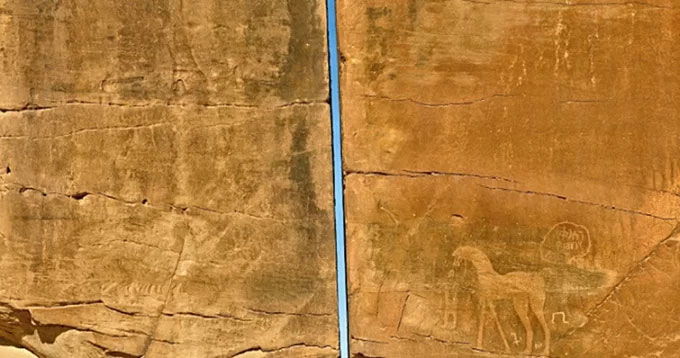
Since the stone block weighing hundreds of tons was discovered in 1883 by Charles Huver, up to now no one has been able to explain the origin of the cut or when it existed and whether this is a natural phenomenon or not. . (Photo: Ancient-code).
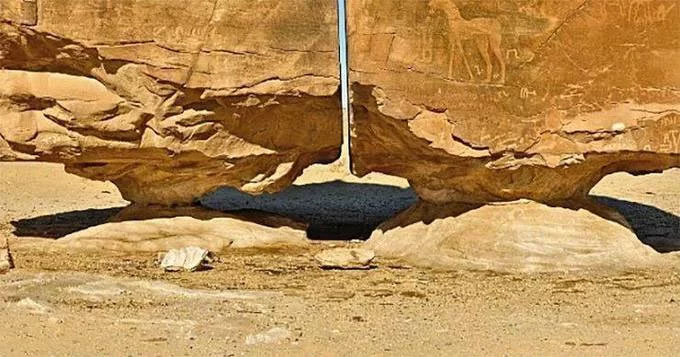 Each half of the rock block is about 7m high, balancing on a smaller rock below. Many people speculate that this structure causes vibrations from the ground to be suppressed, helping the stone stand firmly for thousands of years. (Photo: Pinterest).
Each half of the rock block is about 7m high, balancing on a smaller rock below. Many people speculate that this structure causes vibrations from the ground to be suppressed, helping the stone stand firmly for thousands of years. (Photo: Pinterest).
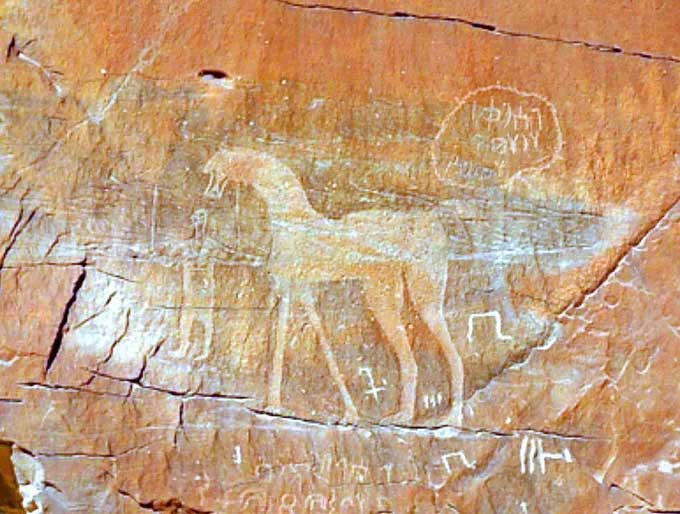
Currently, no one clearly understands the meaning of the mysterious drawings and characters on the surface of the stone block. According to archaeologists, the oldest records about the Tayma oasis date back to the 8th century BC. The carvings and hieroglyphs here may refer to Tayma being part of an important overland route connecting the Red Sea coast of the Arabian Peninsula and the Nile valley.
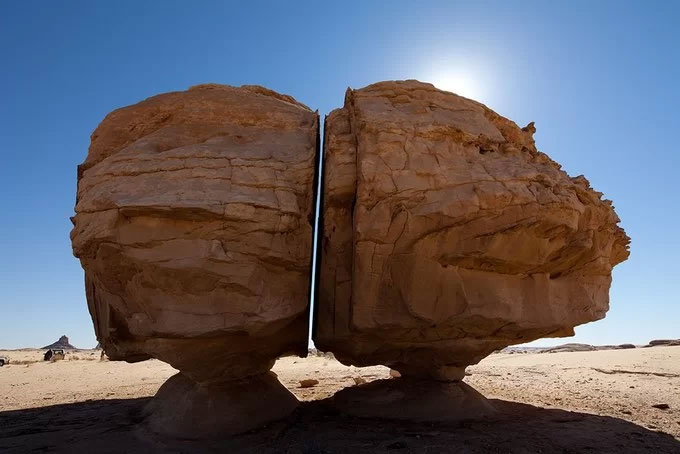
The back of the Al Naslaa rock is not as flat as the front. It is estimated to be up to 10,000 years old. There are currently two opinions on the formation of the Al Naslaa rock massif. Some people believe that this is a natural phenomenon, vibrations in the ground cracking the rock in half. Other opinions say that this is the work of a vanished civilization with a high level of technology. Although there is no satisfactory answer, this rock still attracts thousands of tourists to the Tayma region every year. (Photo: Pinterest).
There are several theories surrounding the cut right in the middle of the Al Naslaa rock. One theory is that the rock lies above the fault line and that the cut was initially created by the ground beneath the rock shifting, causing it to split in two at its weakest point. The crack created by this activity then becomes a kind of “tunnel” for the desert sand winds to sweep across the surface. As sand particles pass through the gap over thousands of years, they can wear away the uneven crack, resulting in a perfectly smooth surface.
Researchers do not rule out the possibility that the crack is a fissure, meaning that the break formed naturally in the rock and was not caused by movement. This type of rift separates the rocks and can be unusually straight as in the case of Al Naslaa.
Another theory is that weathering according to the freeze-thaw cycle created cracks when water in ancient times seeped into small cracks in the sandstone that was still together at that time. This water can then freeze, making the crack even more serious. After the cold period ends, the ice in the crack thaws and melts, leaving a perfectly straight gap dividing the rock in half.
There are others who believe that Al was formed from a volcano containing some weaker minerals that solidified there before anything was excavated.
However, there are also people who believe that Al Naslaa is the work of an advanced ancient civilization or aliens. Because, while both of these hypotheses seem unlikely, many believe that vertical separation seems too perfect to be true.
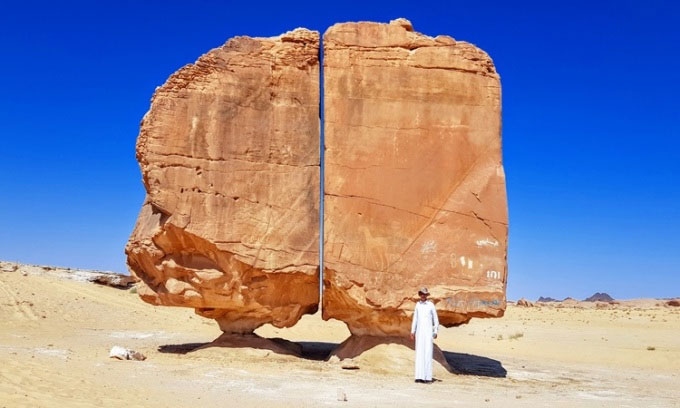 Al Naslaa rock in 2021. (Photo: Wikimedia).
Al Naslaa rock in 2021. (Photo: Wikimedia).
As for the base the rock sits on, they are quite common in desert areas, sometimes called mushroom rocks based on their shape. They often result from weathering caused by winds blowing faster near the ground, abrading rocks more there, or glacial action as rocks move to balance on top of other rocks.
Due to the nature of sandstone, Al Naslaa rock is not too strong, so it is affected by weathering and human impact. It is possible that ancient civilizations created the strange rock sculpture as a geographical landmark, area of religious significance or example of early art.





